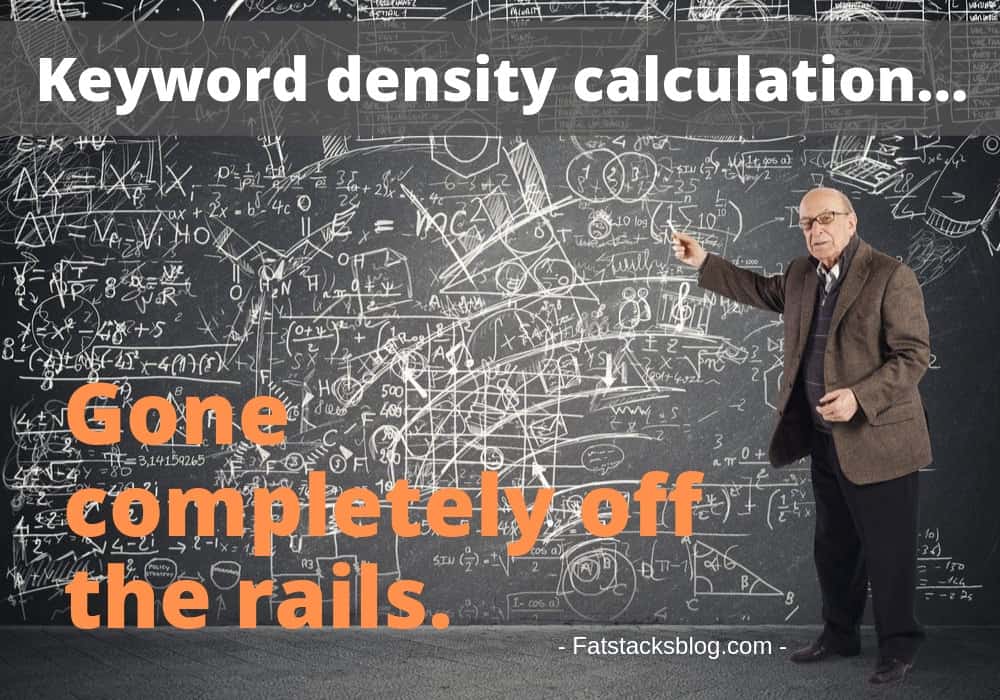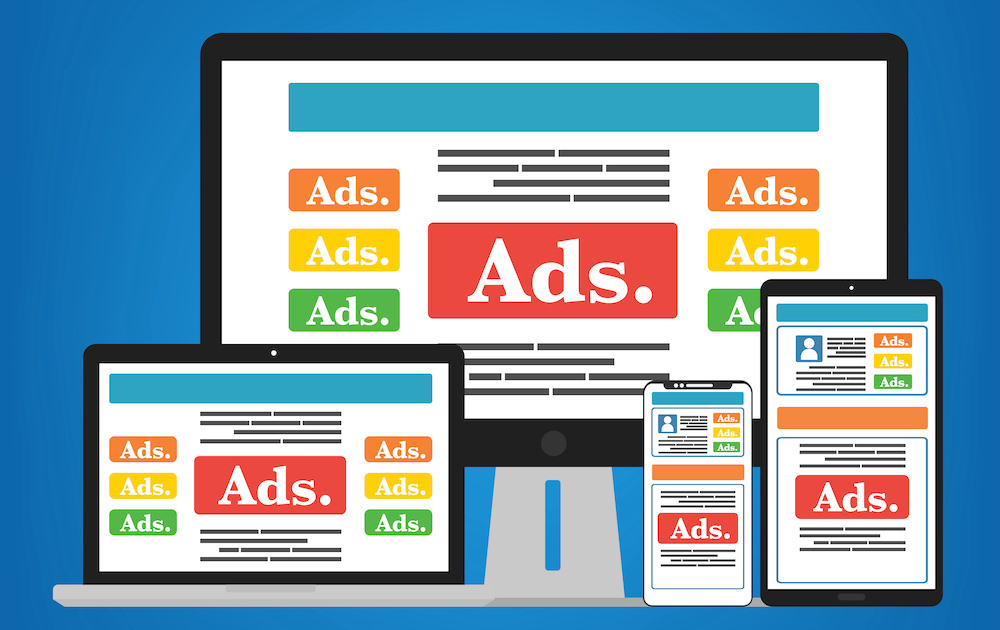After I sent my article about the good and bad news of being a niche site publisher to Fat Stacks readers via email, several people asked about what I do for on-page SEO?
Here’s one reader’s thorough question on the subject:
Can you create a sample page and walk me through all the steps of perfect on-page SEO?
For example, Title in H1, sub-titles in H2,
Where to include the keywords, how many to use within the content, the best method to link to other various articles on your site, what anchor text to use, what anchor text to use in images, what the writer needs to do, what they need to avoid doing etc?
As always, any information or assistance you can provide would be greatly appreciated.
It’s a good question.
I replied with:
It’s a good topic for a blog post. But I think you’ll be a bit disappointed (maybe happy), because I’m not overly analytical about that stuff. I just do what the article requires.
As promised, this post is my full response. As for a live post as an example, this article serves is as good of an example as any.
The title of this article is a bit tongue-in-cheek because I don’t rely on any one magic formula. I let the topic dictate what’s needed. That said, there are a few things I do consistently.
Disclaimer
Let me be clear, I do not profess to be an SEO expert or guru. I’m just a dude who publishes niche sites that get decent traffic. Everything below is based on what I do. I make no proclamations of SEO truth. I only have suspicions and hunches as to what works.
My secret on-page formula in a nutshell:
- Title (H1) and SEO Title: I include the main keyword. This is very important (despite the Google Hummingbird update).
- Content: Publish the very best content possible. Cliche? Yes. Effective? Yes.
If you do the above two things, you’re 80% of the way there. Probably more.
There’s a bit more to it than that, so here’s everything I consider for on-page SEO.
Title (H1) and SEO Title
By “Title (H1)” I’m referring to the WordPress blog post title field.
By “SEO Title”, I’m referring to the title field in the SEO plugin, which is usually below the content area in WordPress. For example, I use the Yoast SEO plugin. The title field is clearly visible below the WordPress visual editor area.
I always include my main keyword in both titles. In fact, 99.99% of the time, my blog post title and SEO title are the same.
The Introduction
I’m a believer that good intros help with SEO. Call me crazy, but I do. I can’t prove it. I have no empirical evidence, but it’s a strong hunch based on my best ranking content. By best-ranking content, I’m referring to content that ranks #1 for really good keywords.
How do I write or instruct for good intros.
I use one of 2 methods in most articles. They are:
- Personal experience: Whenever I can write a short personal story related to the topic, I do. I make it personal and interesting. This gives the article personality. Of course this alone won’t secure top rankings, but much of my highest traffic articles have intros with a personal perspective.
- Stats and facts: Because writers I hire can’t write my personal experience, when I request an intro, I instruct them to kick off with statistics and interesting facts on the topic. This makes it interesting right off the bat. However, I often instruct writers to not write an intro because I want to do it.
Table of Contents
For long articles with several sections and headings, I put in a Table of Contents directly below the introduction. Again, I can’t prove this helps SEO, but I think it does. It offers text links within the article.
But, because I put in a table of contents in most long articles, it’s not as if I get hordes of traffic to every article that has a table of contents. Moreover, longer articles attract more traffic generally, so it could be length rather than the existence of a table of contents that does the job.
The plugin I use for table of contents is Table of Contents Plus.
Heading 2 and 3 Tags
I’m a stickler for proper article organization. By this I mean that headings are structured in a hiearchical manner.
- Main headings have a h2 tag.
- Sub-headings to each main heading have an h3 tag.
- Sub-headings to h3 headings are h4 and so on. I seldom go beyond h3.
It’s perfectly fine having only heading 2 tags if there aren’t sub-sections to a main heading. I do this often.
A good example is this article. It’s broken up into multiple sections, each section with a heading 2 tag. The section under “Instructing Writers” has heading 3 sub-sections.
Images
I also am a stickler about optimizing images for SEO, which includes reducing file size, image file names and Alt text.
I wrote an in-depth article on how I do Image SEO here.
Do you have to include images for SEO?
I always include one image which is the featured image.
If you’ve read a few blog posts on this site, you’ll notice other than featured images, I don’t use all that many images.
However, in niches that are more visual, I do use lots of images. Loads of them. It all depends on the article.
I don’t think you have to have a set number of images to rank an article. They don’t hurt, but I don’t believe they don’t help unless you’re trying to rank images (i.e. Image SEO).
Keyword Density
I pay very little attention to keyword density. In fact, I instruct writers to avoid keyword stuffing.
I usually include the keyword once toward the top of the article and perhaps once in a heading. That’s about it.
I probably could benefit including synonyms and other “related search” terms in more articles. I do this sometimes and don’t bother with other articles.
I’m a believer in natural writing. Just write the best article possible so it’s as good as possible for readers. That’s my overarching aim with content.
Interlinking
Interlinking is linking to and from other articles on your site.
I do this for most articles. I should do it more.
If an article is part of a series that includes a cornerstone article, I definitely link to and from the cornerstone.
If not, I usually link to it from one to 5 other related articles.
I typically link out to other articles on my site if it makes sense.
I believer interlinking is good for SEO. I should probably do more of it.
What about interlinking hypertext?
I don’t have any formula here. Here are examples:
- Click here to read XYZ article.
- Learn more about XYZ here.
- Sometimes I’ll link one word to the other article without any “click here” or similar.
- If I want more clicks on the link, I’ll make it more tempting with “check out my incredible write-up about XYZ”.
Generally, I use hyperlink text that makes sense.
Word Count
Most articles I publish are fairly long coming in around 1,000 words to 5,000 words. Most are about 2,500 words but that varies by site. Image-rich content has less text.
But sometimes a topic is thoroughly covered with 500 words. While rare, it happens. I avoid adding fluff.
I find it’s good to include closely related topics in articles. For example, if I were to publish an article on “How to build a dog house”, I’d have the following sections:
- Intro
- Materials needed (h2)
- Steps for building a dog house (h2)
- Size considerations (h2)
- Small dogs (h3)
- Medium-sized dogs (h3)
- Large dogs (h3)
- More design ideas (h2)
- Additional features (h2)
22 Content Enhancers to Make Your Articles Better
While a well-written article can do wonders, there are many ways you can take it to the next level. I’m constantly trying different ways to enhance content for users and for search.
Over the years I’ve come up with a variety of ways to do this.
These are what I call “Content Enhancers””. Yeah, pathetic name, but it gets the point across.
I wrote an in-depth article listing out all 22 here.
FYI, I’ve had several Fat Stacks readers tell me they bookmark that article as a checklist for sprucing up and improving content once the text is done. I do the same. I refer to that particular article more than any other on this site. Enjoy!
Instructing writers
What I instruct writers to avoid?
- Keyword stuffing.
- Intros (I often prefer writing intros).
- Fluff.
- Long paragraphs. I prefer paragraphs broken up because it makes it easier to read.
What I want writers to do:
- Interlink.
- Link to external references and sources.
- Use proper heading tags and use plenty of them. Break up the sections.
- Write quality, info-dense content.
- Make as much of it interesting with statistics, facts and examples.
- Find relevant, excellent images when it makes sense to do so. The writing agency I use takes the time to find images and put them in the content they format.
- Research extensively: I am not happy when information that belongs in an article is not included. I’m demanding about the degree of research that needs to be done. I prefer thoroughness overcoming in under some word count budget. I provide word count guidelines but make it clear that if a topic warrants it, they can exceed the word count.

Jon Dykstra is a six figure niche site creator with 10+ years of experience. His willingness to openly share his wins and losses in the email newsletter he publishes has made him a go-to source of guidance and motivation for many. His popular “Niche site profits” course has helped thousands follow his footsteps in creating simple niche sites that earn big.







Hi Jon,
Another great post as per usual.
Do you do all your editing (including headings, pictures, etc) outside Wordpress then import or do you use a plugin to do this inside Wordpress?
Hey Justin,
My writing service does the post formatting and images etc. I suspect they do it in some external document and then import it, but I don’t know for sure.